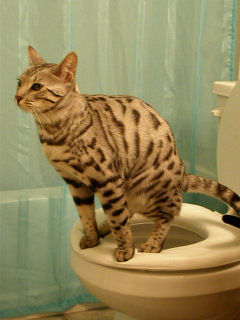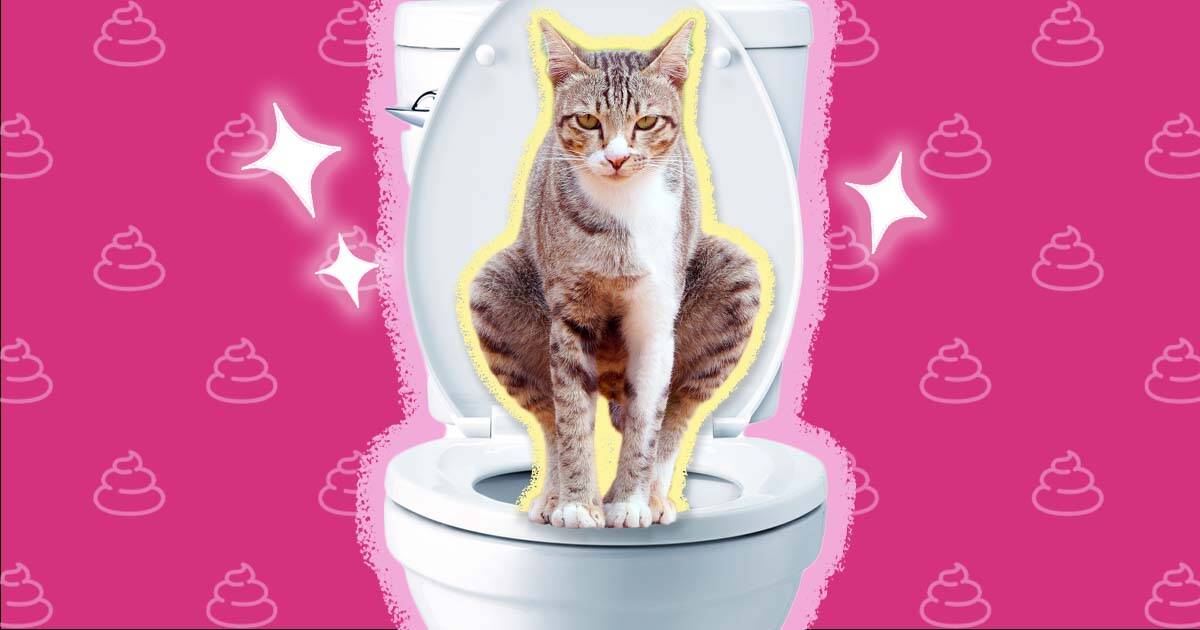Which Flushing Animal Waste Should be Not Advisable
Which Flushing Animal Waste Should be Not Advisable
Blog Article
Do you find yourself trying to find information and facts around Should you flush animal waste down the toilet?

When it involves getting rid of waste, specifically animal waste, many people frequently turn to the hassle-free alternative of flushing it down the bathroom. However, this relatively easy service can have major repercussions for the atmosphere and public health. In this post, we'll discover why flushing pet waste down the toilet is a bad concept and supply alternative techniques for proper disposal.
Intro
Proper waste disposal is crucial for preserving ecological sustainability and public health. While it might seem harmless to flush animal waste down the commode, it can cause various problems, both for the atmosphere and human well-being.
Risks of flushing pet waste
Ecological influence
Flushing pet waste introduces unsafe germs and virus into waterways, which can adversely affect marine communities. These microorganisms can infect water resources and harm marine life, interrupting delicate environments.
Public health worries
Animal waste includes unsafe bacteria such as E. coli and Salmonella, which can posture significant wellness dangers to people. Purging pet waste down the commode can pollute water products, bring about the spread of illness and infections.
Alternatives to flushing
Rather than purging pet waste down the bathroom, there are several alternate disposal approaches that are a lot more eco-friendly and hygienic.
Composting
Composting pet waste is a green way to dispose of it. By composting, raw material is broken down into nutrient-rich dirt, which can be made use of to feed yards and plants.
Garbage dump disposal
Throwing away animal waste in a garbage dump is another alternative. While not as environmentally friendly as composting, it is a safer alternative to flushing, as it prevents the contamination of water resources.
Pet dog waste disposal systems
There are customized pet waste disposal systems readily available that safely and hygienically get rid of pet waste. These systems usually utilize enzymes to break down waste and get rid of smells.
Actions to proper pet garbage disposal
To ensure appropriate disposal of animal waste, comply with these actions:
Scooping and bagging waste
On a regular basis scoop and bag pet waste making use of naturally degradable bags. This protects against waste from infecting the setting.
Making use of marked waste containers
Dispose of bagged pet waste in assigned waste bins, such as compost containers or garbage dump bins. Avoid flushing it down the bathroom at all expenses.
Cleansing can and family pet areas consistently
On a regular basis tidy can and family pet areas to prevent the accumulation of waste and microorganisms. Use pet-safe cleaning items to keep health.
Benefits of appropriate disposal techniques
Adopting appropriate disposal methods for pet waste read more supplies several benefits:
Lowered environmental pollution
Appropriate disposal approaches reduce the threat of environmental pollution, safeguarding rivers and ecological communities from contamination
Reduced threat of water contamination.
By staying clear of flushing animal waste down the bathroom, the threat of water contamination is significantly minimized, safeguarding public health.
Improved cleanliness and hygiene
Proper disposal methods advertise far better hygiene and health, developing a much safer setting for both people and animals.
Conclusion
In conclusion, purging animal waste down the commode is harmful to the setting and public health. By taking on alternate disposal approaches and following appropriate waste monitoring methods, we can reduce the negative effect of pet waste and contribute to a cleaner, healthier world.
Why You Should Never Flush Cat Poop Down the Toilet
A rose by any other name might smell as sweet, but not all poop is created equal. Toilets, and our sewage systems, are designed for human excrement, not animal waste. It might seem like it couldn’t hurt to toss cat feces into the loo, but it’s not a good idea to flush cat poop in the toilet.
First and foremost, assuming your cat uses a litter box, any waste is going to have litter on it. And even the smallest amount of litter can wreak havoc on plumbing.
Over time, small amounts build up, filling up your septic system. Most litter sold today is clumping; it is made from a type of clay that hardens when it gets wet. Ever tried to scrape old clumps from the bottom of a litter box? You know just how cement-hard it can get!
Now imagine just a small clump of that stuck in your pipes. A simple de-clogger like Drano isn’t going to cut it. And that means it’s going to cost you big time to fix it.
For an amusing, graphic tale of what happens when you flush too much litter down the toilet all at once, take a few minutes to read Gene Weingarten’s 2017 Washington Post column “So that’s what happens when you flush cat litter down the toilet.”
Parasitic Contamination
Believe it or not, your healthy kitty may be harboring a nasty parasite. Only cats excrete Toxoplasma in their feces. Yet it rarely causes serious health issues in the cats that are infected. Most people will be fine too if infected. Only pregnant women and people with compromised immune systems are at risk. (If you’ve ever heard how women who are expecting are excused from litter cleaning duty, Toxoplasma is why.)
But other animals may have a problem if infected with the parasite. And human water treatment systems aren’t designed to handle it. As a result, the systems don’t remove the parasite before discharging wastewater into local waterways. Fish, shellfish, and other marine life — otters in particular — are susceptible to toxoplasma. If exposed, most will end up with brain damage and many will die.
Depending on the species of fish, they may end up on someone’s fish hook and, ultimately on someone’s dinner plate. If that someone has a chronic illness, they’re at risk.
Skip the Toilet Training
We know there are folks out there who like to toilet train their cats. And we give them props, it takes a lot of work. But thanks to the toxoplasma, it’s not a good idea.
Leave the toilet to the humans, and accept your future litter cleaning duty.

On a regular basis tidy can and family pet areas to prevent the accumulation of waste and microorganisms. Use pet-safe cleaning items to keep health.
Benefits of appropriate disposal techniques
Adopting appropriate disposal methods for pet waste read more supplies several benefits:
Lowered environmental pollution
Appropriate disposal approaches reduce the threat of environmental pollution, safeguarding rivers and ecological communities from contamination
Reduced threat of water contamination.
By staying clear of flushing animal waste down the bathroom, the threat of water contamination is significantly minimized, safeguarding public health.
Improved cleanliness and hygiene
Proper disposal methods advertise far better hygiene and health, developing a much safer setting for both people and animals.
Conclusion
In conclusion, purging animal waste down the commode is harmful to the setting and public health. By taking on alternate disposal approaches and following appropriate waste monitoring methods, we can reduce the negative effect of pet waste and contribute to a cleaner, healthier world.
Why You Should Never Flush Cat Poop Down the Toilet
A rose by any other name might smell as sweet, but not all poop is created equal. Toilets, and our sewage systems, are designed for human excrement, not animal waste. It might seem like it couldn’t hurt to toss cat feces into the loo, but it’s not a good idea to flush cat poop in the toilet.
First and foremost, assuming your cat uses a litter box, any waste is going to have litter on it. And even the smallest amount of litter can wreak havoc on plumbing.
Over time, small amounts build up, filling up your septic system. Most litter sold today is clumping; it is made from a type of clay that hardens when it gets wet. Ever tried to scrape old clumps from the bottom of a litter box? You know just how cement-hard it can get!
Now imagine just a small clump of that stuck in your pipes. A simple de-clogger like Drano isn’t going to cut it. And that means it’s going to cost you big time to fix it.
For an amusing, graphic tale of what happens when you flush too much litter down the toilet all at once, take a few minutes to read Gene Weingarten’s 2017 Washington Post column “So that’s what happens when you flush cat litter down the toilet.”
Parasitic Contamination
Believe it or not, your healthy kitty may be harboring a nasty parasite. Only cats excrete Toxoplasma in their feces. Yet it rarely causes serious health issues in the cats that are infected. Most people will be fine too if infected. Only pregnant women and people with compromised immune systems are at risk. (If you’ve ever heard how women who are expecting are excused from litter cleaning duty, Toxoplasma is why.)
But other animals may have a problem if infected with the parasite. And human water treatment systems aren’t designed to handle it. As a result, the systems don’t remove the parasite before discharging wastewater into local waterways. Fish, shellfish, and other marine life — otters in particular — are susceptible to toxoplasma. If exposed, most will end up with brain damage and many will die.
Depending on the species of fish, they may end up on someone’s fish hook and, ultimately on someone’s dinner plate. If that someone has a chronic illness, they’re at risk.
Skip the Toilet Training
We know there are folks out there who like to toilet train their cats. And we give them props, it takes a lot of work. But thanks to the toxoplasma, it’s not a good idea.
Leave the toilet to the humans, and accept your future litter cleaning duty.

I'm very involved in 4 Reasons Why Dog Poop Cleanup is Important and I am hoping you appreciated the post. Feel free to take the time to promote this blog posting if you liked it. Thank-you for your time spent reading it.
Website Report this page